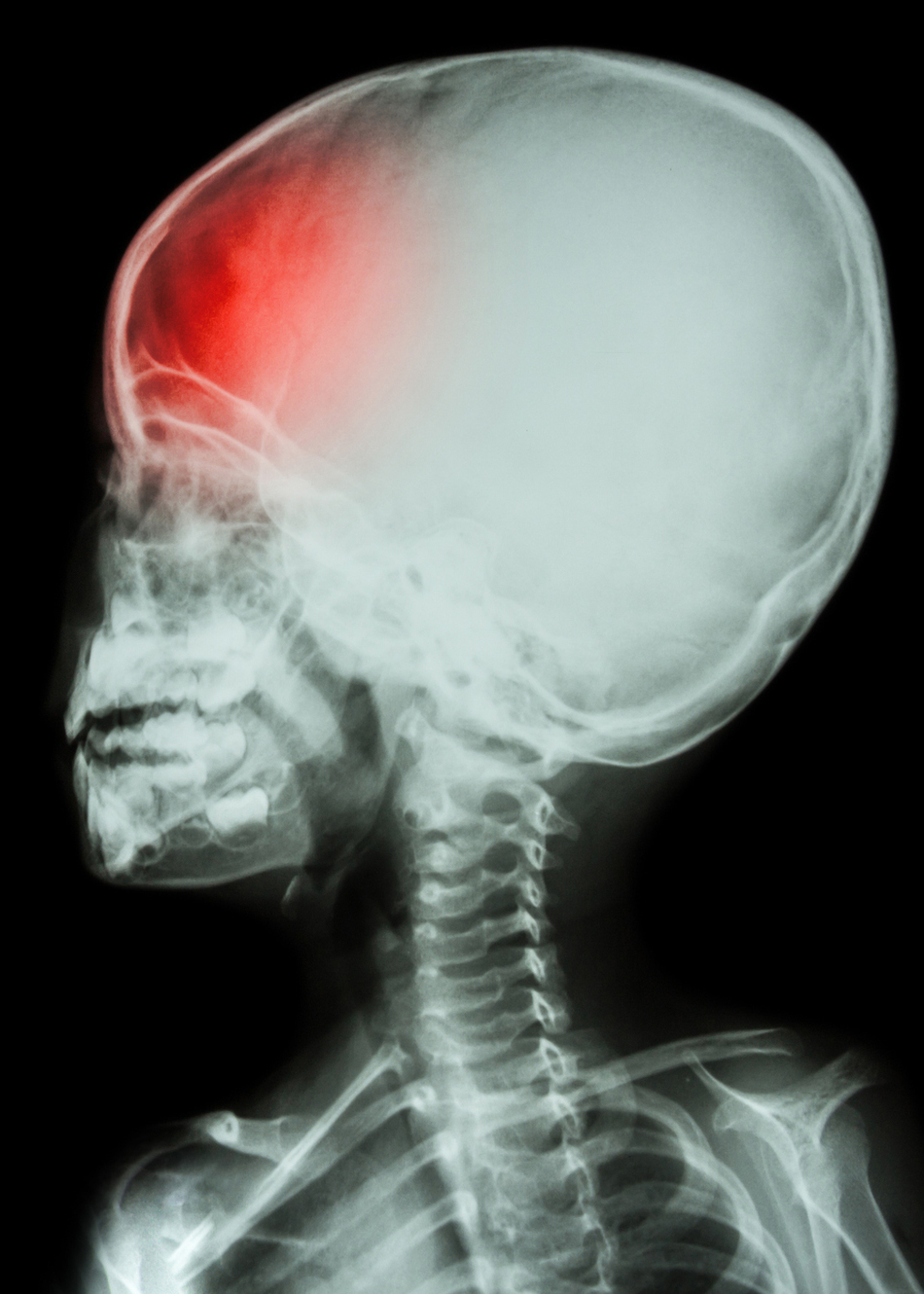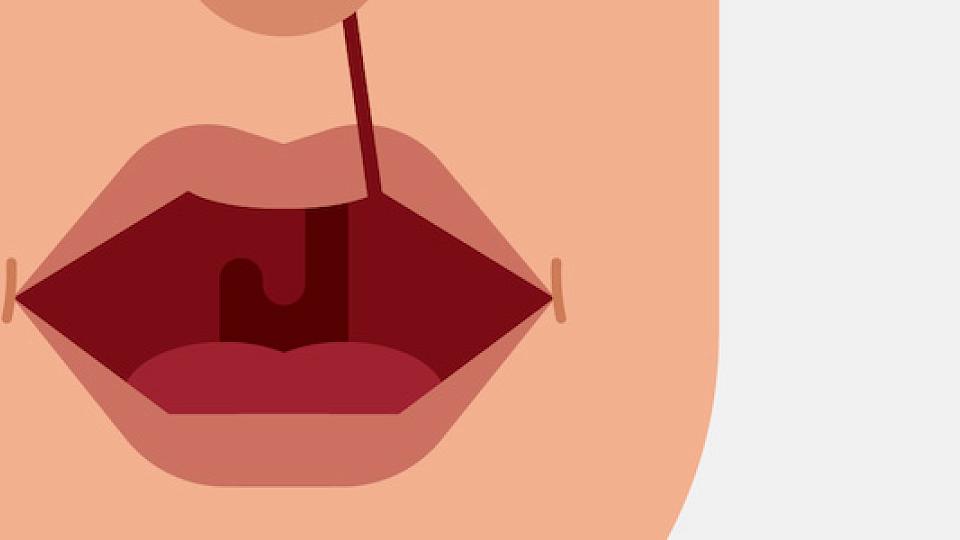
Interviewer: Craniosynostosis. It's a condition that causes a newborn's head to be misshapen. And it should be treated. To learn more about the condition, how to identify it, and why it needs to be treated, we've got Dr. John Kestle, he's a pediatric neurosurgeon, and Dr. Faizi Siddiqi, he's a pediatric plastic surgeon. And they are experts. They do the surgery that actually treats craniosynostosis.
So let's start with the first question, which is very basic. Dr. Kestle, what is craniosynostosis?
Dr. Kestle: So it's a condition where the bones that are normally separate are fused. And it restricts growth and creates abnormal head shapes. The pattern is usually present at birth or very soon after birth. That's different from the benign conditions where the head shape gets distorted because the baby is laying on one side. Those babies have a normal shape in the beginning and their head shape gets distorted over the first couple of months of life because they're lying on one side.
Interviewer: How does a parent generally find out that their child has craniosynostosis or synostosis?
Dr. Siddiqi: When they're born, they're usually told that after delivery, as Dr. Kestle mentioned, the head is going to be a little misshapen from the birthing process. And that usually corrects within two to three weeks. If that doesn't correct, then they're kind of suspicious and they visit their pediatrician. And then hopefully that's when they're referred for further evaluation by us.
Interviewer: And then what does that head shape look like? We do have a link to a pamphlet that you have that can help a parent. But just describe it briefly.
Dr. Kestle: So the typical head shapes, number one, most common is sagittal synostosis. It makes the head long and narrow, and the forehead and the back of the head kind of stick out. And the back of the head is narrower than the middle of the head. You can see those features when you look down from above.
Probably the second most common type is metopic synostosis. And that's when the suture down the forehead closes early and the forehead looks like the bow of a boat, or a triangle.
The other two types are less common. One is coronal synostosis, and that misshapes one side of the forehead so the forehead is pulled back, and the nose is sometimes crooked, and the eye socket on that side is usually a little bit elevated. And then the very rare one is the lambdoid synostosis, where the back of the head is flat on one side and the ear tends to be pulled back toward the flat side.
Interviewer: So how is it diagnosed then? So a parent recognizes that their child might have a misshapen head, they're concerned, they would go to a pediatrician first?
Dr. Siddiqi: Certainly they visit with their pediatrician and then they're referred to our synostosis clinic for further evaluation.
Interviewer: Okay. The pediatrician doesn't do any sort of imaging or anything like that generally?
Dr. Siddiqi: Sometimes they do. Oftentimes they don't because they don't want to subject the child to a CT scan unless they've seen a specialist and they're confident of the diagnosis. So we would see those kids in the clinic. Most of the time, it's a clinical diagnosis.
Interviewer: Meaning it's just visual, you're visually confirming it?
Dr. Siddiqi: Yeah. But once we decide it is and we talk about surgery, then we would want to get a CT scan, generally speaking, to be definitive about the diagnosis. And the scan also gives us information about the brain, which is helpful as well.
Interviewer: Why do you choose a CT scan over, say, an X-ray or some other sort of imaging?
Dr. Siddiqi: A CT scan gives much more detail of not only the bones, but, as I said, also the brain as well.
Dr. Kestle: The X-ray is very unreliable in making the diagnosis. And the CT scan has been changed over the years so the dose of radiation that's received is lower and lower. So now it's a very reasonable thing to do. It gives excellent anatomy, helps us with planning a surgery, makes the surgery safer.
Interviewer: And, Dr. Siddiqi, when do you generally like to treat a synostosis then?
Dr. Siddiqi: So if we see a baby with, let's say, sagittal synostosis that comes in at 2 to 3 weeks of age, then we've seen that the optimal time for surgery would be somewhere around 3 months of age. Between 2 and 4 months of age. That's why we stress the importance of early referral.
And the reason for that is if we can get the kids in by that time, we can get the surgery done, and then we can get them in the helmet and the duration of a helmeting would be as short as six months. So if we see these kids later on, the helmeting duration is much longer.
Interviewer: And, Dr. Kestle, if a child doesn't receive treatment for a synostosis, what could be the potential outcome then?
Dr. Kestle: So the natural history is that the shape will stay the same or get progressively worse because everything is growing except the fused suture. So number one, it's an issue of shape and appearance.
Number two, there are potential effects on the brain if it's left untreated. There's an incidence around 15%, maybe 20%, in the kids with sagittal synostosis that the brain growth will be restricted. And that can lead to brain problems, chronic headache, possibly visual problems.
With the other types of synostoses, that number is a little higher. And so it's nearly impossible to predict which baby with synostosis is going to get into those brain problems later. But that incidence of raised pressure is enough that we worry about leaving it alone.
Occasionally, we'll see an older child who had a CT scan for another reason, like maybe a concussion, and we identify a fused suture. But their shape is normal, and they're healthy, and their brain is developing normally. That's the situation where we might just follow them. But the baby that has the abnormal shape soon after birth is the ones where we recommend treatment.
Dr. Siddiqi: I would just add that . . . echo what Dr. Kestle said. The two indications are the shape and the risk of pressure on the brain. But the shape is important. A lot of families ask, or even other providers say, "Is this cosmetic?" It's not cosmetic. Cosmetic means, by definition, it's normal and you're making it better. It's not normal to have craniosynostosis. I just wanted to make that clear.
Dr. Kestle: I just want to really emphasize that it's visual. It's the shape that makes the diagnosis. So much so that what we do for almost every patient is have the family send photos. And we can pretty much make the diagnosis from the photographs and then decide if they need additional testing, how quickly we need to see them, and so on. But it's really a visual inspection of the head shape that tells you the diagnosis 90-plus percent of the time.
Interviewer: So really at 3 weeks, if a parent suspects that their child might have a synostosis, they should get in contact with a couple of specialists or a specialty center such as yourselves. You would encourage them to do that as quickly as possible. Is time really of the essence?
Dr. Kestle: For sure. And we can make plans based on photos, and we can see them in the clinic and talk about it, and then targeting between 2 and 3 months for corrective surgery.




